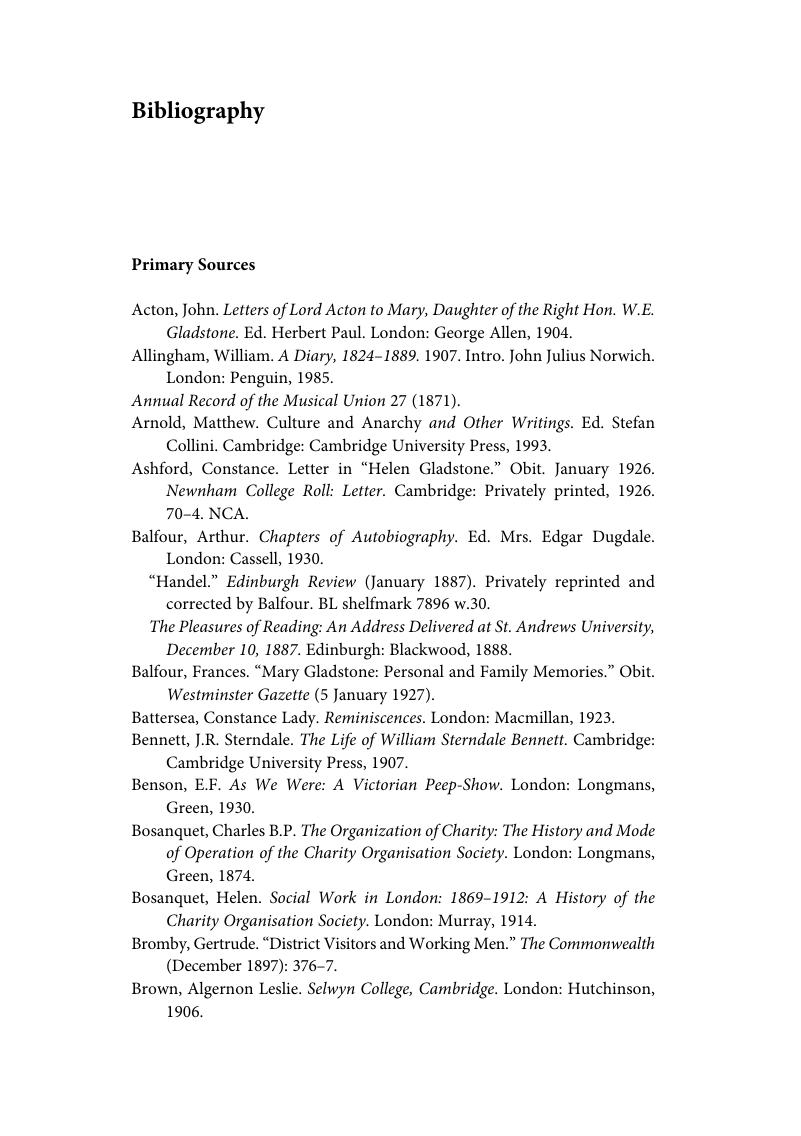Book contents
- Mary Gladstone and the Victorian Salon
- New Perspectives in Music History and Criticism
- Mary Gladstone and the Victorian Salon
- Copyright page
- Dedication
- Contents
- Illustrations
- Acknowledgments
- System of References
- Glynne Family Tree
- Introduction
- Part I Intellectual History
- Part II Musical and Literary Case Studies
- Bibliography
- Index
- References
Bibliography
Published online by Cambridge University Press: 15 September 2017
- Mary Gladstone and the Victorian Salon
- New Perspectives in Music History and Criticism
- Mary Gladstone and the Victorian Salon
- Copyright page
- Dedication
- Contents
- Illustrations
- Acknowledgments
- System of References
- Glynne Family Tree
- Introduction
- Part I Intellectual History
- Part II Musical and Literary Case Studies
- Bibliography
- Index
- References
Summary

- Type
- Chapter
- Information
- Mary Gladstone and the Victorian SalonMusic, Literature, Liberalism, pp. 273 - 294Publisher: Cambridge University PressPrint publication year: 2017



